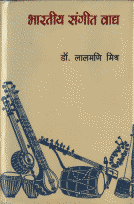Excerpts from
Bharatiya Sangeet Vadya -
Brahma Veena

|
Excerpts from Bharatiya Sangeet Vadya -Brahma Veena |

|
By Dr. Lalmani Misra |

The term, Brahma Veena (also, Brahmi Veena) has been mentioned in several treatises. Prominent scholars maintain that Brahma Veena is another name for ancient EkTantri or Ghoshak Veena, but Vaachanacharya Sudha Kalash has named Ghoshwati and Brahma Veena as two distinct instruments in his treatise, Sangeetopnishatsaroddhar.
" Tatha ghoshwati veena vipanchi kanthkoornika Vallaki brahmaveeneti veenabhedastavanekashah || (Sangeetopnishatsaroddhar, 4 | 9)
Thus Brahma Veena can not be a synonym for Ghoshwati. It is quite possible that similarities between the two existed; it is also possible that there were minor differences of shape or in size, but clearly sufficient enough to distinguish one from the other.
Brahma Veena finds mention in "Sangeet-Parijaat" as well, but here instead of Ghoshvati, it is stated to be a variant of Rudra Veena, instead of Ghoshwati. "Radha Govinda Sangeet Sara" too considers it to be another form of Rudra Veena. In this work, description of this Veena and how to construct it, runs thus:
" This very Rudra Veena, when constructed with resonators made of wood, is known as Brahma Veena. Keep the lower part of Brahma Veena broader than Rudra Veena, and length, the same. Keep frets same as Rudra Veena. Fix seven strings in Brahma Veena. Tune first two iron strings in Shadja. Both these strings are 8 Vaata (bit/ unit to measure thickness) thick. Take iron wire for third and fifth strings. Fourth and sixth strings of metal, are of seven bit thickness. Third and Fifth strings are eight bit thick. Fix seventh string for drone.. else, it can be done without. There is no hard rule. That completes description of Brahma Veena1.
Pandit Vidyavilasi too has mentioned this Veena.
" Brahma veena mahaveena prasiddhau (dwe) cha pura kada || [Vadyapraksh, 27, Tatvadyani. Manuscript.] It can be inferred that this Veena was in circulation in some or other form from 11th to 17th century. With the Seni musicians taking up Saraswati (Rudra) Veena as main instrument, importance of Brahma Veena diminished and it gradually receded into oblivion.
It can be inferred that this Veena was in circulation in some or other form from 11th to 17th century. With the Seni musicians taking up Saraswati (Rudra) Veena as main instrument, importance of Brahma Veena diminished and it gradually receded into oblivion.
In medieval paintings, two kinds of representations of Saraswati (Rudra) Veena2 are encountered. The upper portion in both type of paintings are similar with little difference but the lower portion exhibits clear deviation. Structure of Tumba-s is vastly different. One has the same shape of Tumba as in Rudra Veena; in other it looks as if Tumba hs been cut in half. And instead of full Tumba-s, halved Tumba-s have been used. This figure of Veena resting on halved Tumba-s (reduced in height) matches with description given in "Radha Govinda Sangeet Sara", that instead of gourd tumba-s made of wood are used and they are wider, broader at base3.
References :
1 Late 18th-cent. Hindi work on music, compiled by Maharaja Sawai Pratap Singh of Jaipur (r. 1779 - 1804) Radha Govinda Sangeet Sara Vol. II, p. 6
2 Seni musicians started calling Rudra Veena as Saraswati Veena, which is distinct from Tanjour Veena, also called Saraswati Veena. See article on Saraswati Veena
3 Excerpt from Bharatiya Sangeet Vadya. Chapter III, Tat Vadya pp. 109-10
Dr. Lalmani Misra on Wikipedia
Excerpts from Bharatiya Sangeet Vadya - Sitar
Excerpts from Bharatiya Sangeet Vadya - Swar-Mandal
Bharatiya Sangeet Vadya 1973. Second edition, 2002. pp109-110
published by
Bharatiya Jnanpith
18, Institutional Area, Lodhi Rd
New Delhi - 110003